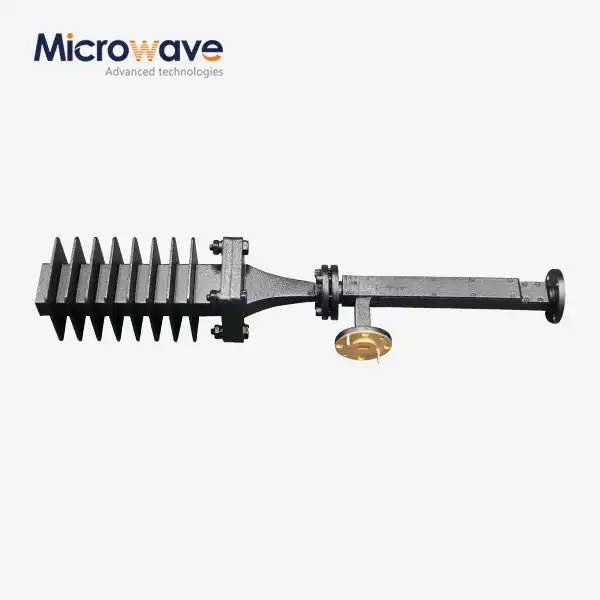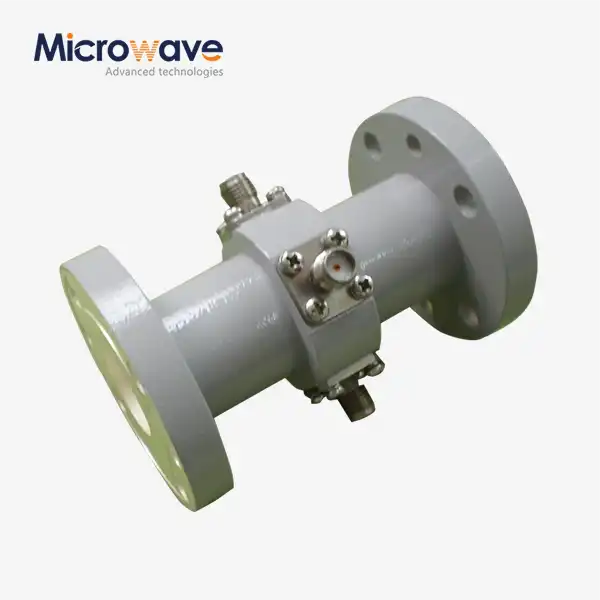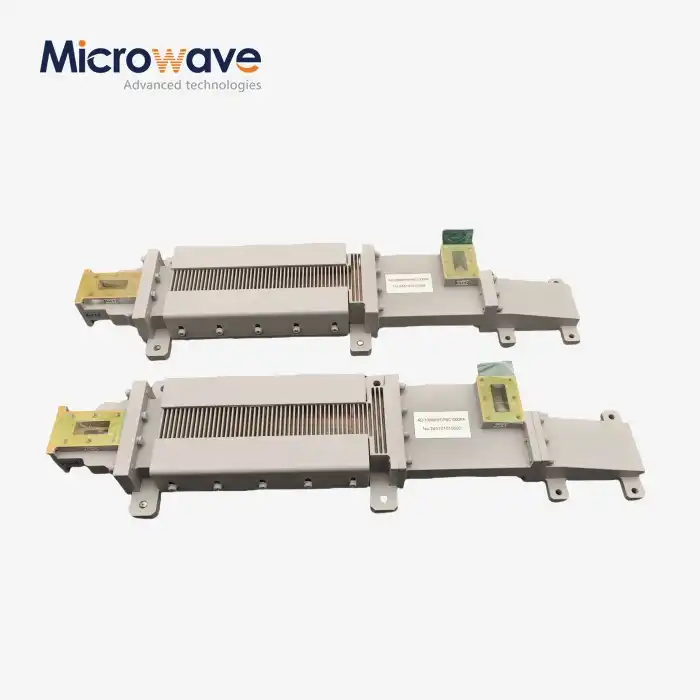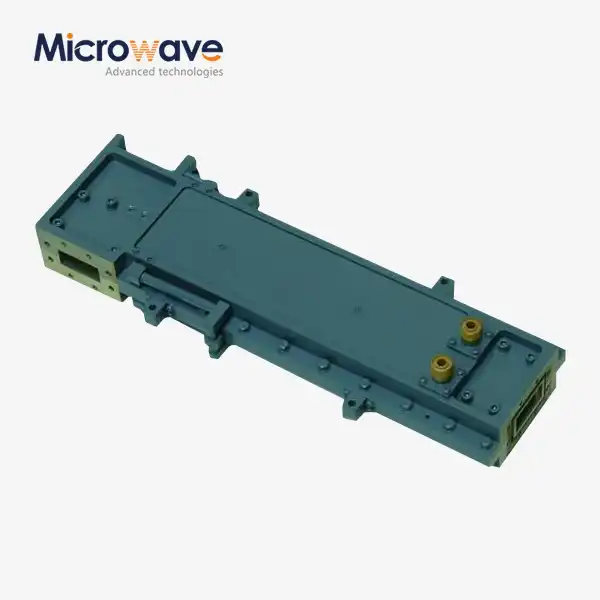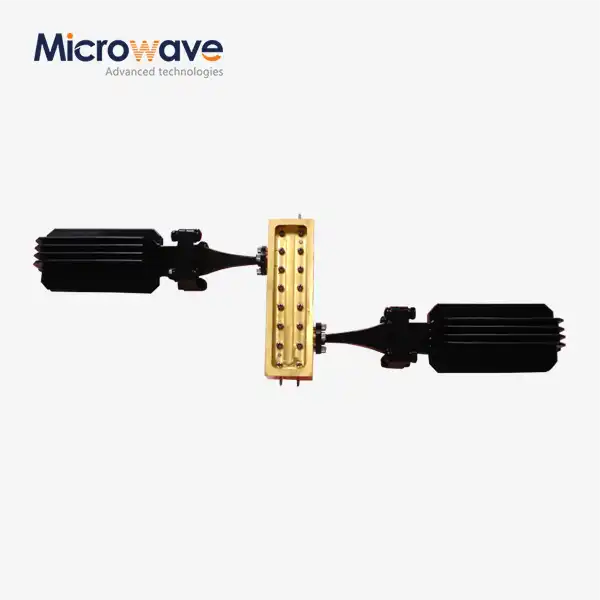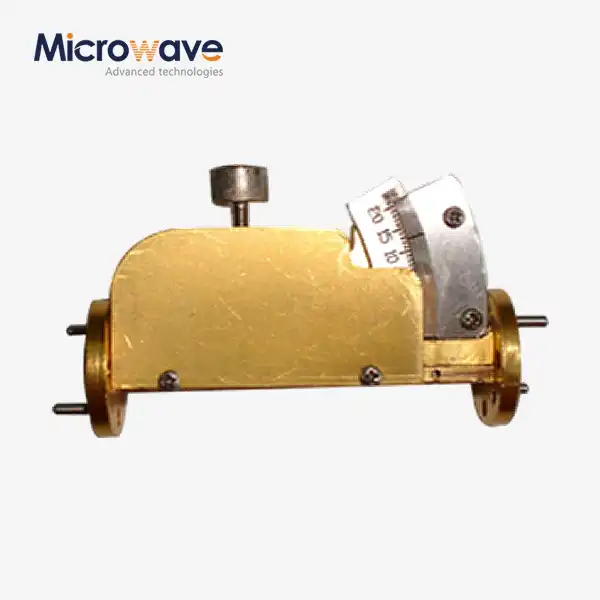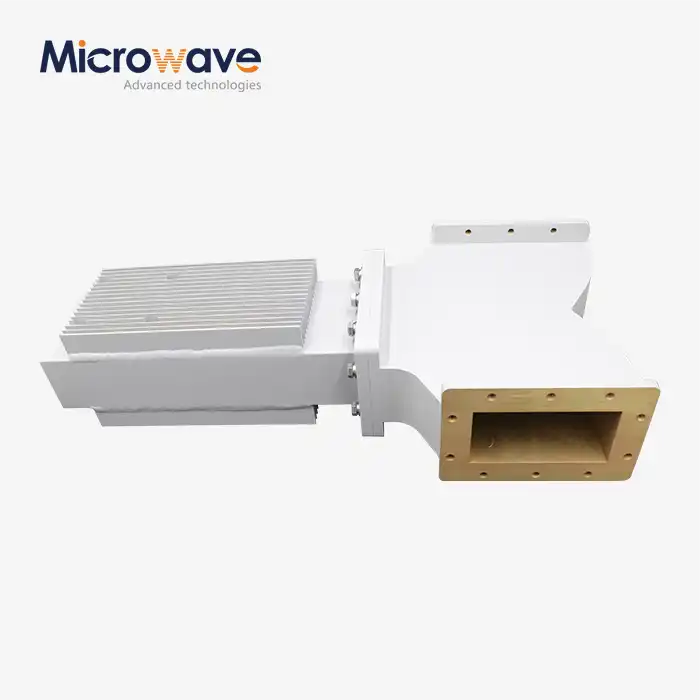What Role Does a Waveguide Isolator Play in Preventing Signal Interference in High-Power Systems?
In today's advanced microwave and RF systems, signal integrity is paramount for optimal performance. High-power microwave systems are particularly vulnerable to signal interference, which can lead to degraded performance, equipment damage, and system failure. Waveguide isolators serve as critical components in these systems, acting as one-way streets for electromagnetic signals. They allow signals to flow efficiently in the forward direction while preventing reflected energy from traveling backward into sensitive components. This protective function is essential in maintaining system stability, extending equipment lifespan, and ensuring reliable operation in applications ranging from satellite communications to defense systems and telecommunications infrastructure.
Understanding Waveguide Isolator Functionality in High-Power Applications
Waveguide isolators are specialized microwave components designed to protect sensitive equipment from reflected power while maintaining signal integrity in high-power systems. Let's explore their core functionality and importance in preventing signal interference.
The Working Principles of Waveguide Isolators
Waveguide isolators operate based on the principles of Faraday rotation, utilizing ferrite materials with unique magnetic properties to create non-reciprocal signal paths. When a microwave signal passes through a waveguide isolator, the ferrite material, under the influence of an external magnetic field, rotates the polarization of the electromagnetic wave in one direction. This rotation allows signals to pass freely in the forward direction while significantly attenuating any signals attempting to travel in the reverse direction. Advanced Microwave manufactures waveguide isolators with a wide range of designs available for high-power microwave and RF applications, leveraging this principle to deliver solutions that ensure signal integrity across various applications. The non-reciprocal behavior of the Waveguide Isolator creates an effective barrier against reflected signals, which is particularly crucial in high-power systems where even small reflections can cause substantial damage or performance degradation. This fundamental operation makes waveguide isolators indispensable in applications requiring strict signal direction control and equipment protection.
Critical Parameters for Effective Interference Prevention
For a Waveguide Isolator to effectively prevent signal interference in high-power systems, several key parameters must be carefully considered and optimized. Isolation, the measure of how effectively the device blocks reverse signals, typically ranges from 20 to 30 dB in quality isolators, with higher values indicating superior protection. Insertion loss, another critical parameter, represents the signal attenuation in the forward direction and should be minimized (ideally below 0.5 dB) to maintain system efficiency. Power handling capability is particularly vital in high-power applications, with isolators needing to manage substantial power levels without degradation or failure. Bandwidth considerations are equally important, as the isolator must maintain optimal performance across the entire operational frequency range of the system. Advanced Microwave Technologies offers various isolator designs with several standard and custom options for waveguide size, power handling, frequency, connector style, cooling, interface, bandwidth, and configuration to address these parameters effectively. By carefully balancing these parameters, engineers can select or design waveguide isolators that provide optimal interference prevention specific to their system requirements.
Applications in Modern High-Power Systems
The Waveguide Isolator finds extensive application in contemporary high-power systems across multiple industries. In satellite communication networks, these devices protect expensive amplifiers and receivers from reflected power while ensuring clear signal transmission. Radar systems, particularly those in defense and aerospace applications, rely heavily on waveguide isolators to maintain precise signal integrity and protect sensitive components from the high power levels involved in transmission. High-energy physics research facilities employ these devices in microwave power transmission systems where signal purity and component protection are paramount. Medical equipment, such as MRI machines, utilize waveguide isolators to protect RF generators from reflected power while maintaining consistent power delivery for accurate imaging. Advanced Microwave Technologies Co., Ltd, with over 20 years of experience in microwave products, has developed Waveguide Isolators that are indispensable in these industries, ensuring uninterrupted and clear signal pathways in satellite communications, integral support for radar systems and secure communication in defense applications, and ideal solutions for base stations and broadband network systems in telecommunications. The versatility and reliability of waveguide isolators make them essential components in virtually any high-power RF or microwave system where signal interference prevention is critical.

Technical Mechanisms of Signal Protection in Waveguide Isolators
To fully appreciate the role of waveguide isolators in preventing signal interference, we must examine the technical mechanisms that enable their protective functions.
Ferrite Material Properties and Their Impact
The heart of any Waveguide Isolator lies in its ferrite materials, which possess unique electromagnetic properties that enable non-reciprocal behavior. These ferrites, typically composed of mixed metal oxides including iron, exhibit gyromagnetic properties when placed in a magnetic field. This phenomenon, known as Faraday rotation, causes the plane of polarization of an electromagnetic wave to rotate as it passes through the material. The direction of rotation depends on the direction of the applied magnetic field rather than the direction of wave propagation, creating the foundation for the isolator's ability to discriminate between forward and reverse signals. Advanced Microwave's Waveguide Isolators are built with precision engineering, utilizing these advanced materials and cutting-edge machining techniques to ensure exceptional performance and reliability. The specific composition and dimensions of the ferrite elements are carefully calibrated to match the operating frequency and power requirements of the system. Temperature stability of these materials is also crucial, as ferrite properties can change with temperature variations, potentially affecting isolator performance. Modern high-performance isolators employ specialized ferrite compositions with enhanced temperature stability and power handling capabilities, ensuring consistent operation even in demanding environments where precision and reliability are essential.
Magnetic Biasing Techniques for Optimal Performance
The performance of a Waveguide Isolator heavily depends on the magnetic biasing techniques employed to control the ferrite material's behavior. Permanent magnets, typically made from rare-earth materials like samarium-cobalt or neodymium-iron-boron, are strategically positioned around the ferrite component to create a uniform and stable magnetic field. The strength and uniformity of this field directly impact the isolator's isolation performance, insertion loss, and bandwidth characteristics. Advanced Microwave Technologies offers isolators with various magnetic biasing configurations optimized for different applications and operating environments. In high-power applications, proper magnetic biasing becomes even more critical as it must maintain stability under thermal stress when the device handles substantial power levels. Some sophisticated isolators incorporate temperature compensation mechanisms in their magnetic biasing systems to maintain consistent performance across wide temperature ranges. The compact design of modern isolators, despite their powerful capabilities, requires precise magnetic field engineering to achieve optimal performance within limited space constraints, allowing for space-saving installation without sacrificing functionality or efficiency.
Heat Management in High-Power Isolator Designs
One of the most significant challenges in high-power Waveguide Isolator design is effective heat management. When blocking reflected power, isolators absorb substantial energy that converts to heat, which must be efficiently dissipated to prevent performance degradation or device failure. Advanced cooling techniques are integral to modern high-power isolator designs, with solutions ranging from passive heat sinks to active liquid cooling systems for the most demanding applications. Advanced Microwave Technologies designs isolators with thermal considerations as a primary factor, incorporating materials with excellent thermal conductivity and creating structures that facilitate efficient heat transfer. The ferrite materials themselves must maintain their magnetic properties across operating temperature ranges, requiring careful selection and testing. In systems with particularly high power levels, isolators may incorporate temperature monitors and safety mechanisms to prevent damage from overheating. The company's waveguide isolators boast enhanced performance with minimized signal loss and high isolation to ensure stable and efficient system operations, even under thermal stress. This durability, built with robust materials to withstand challenging environments, makes these isolators ideal for applications where heat management is crucial for maintaining system integrity and preventing signal interference caused by thermally-induced performance fluctuations.

Integration Strategies for Maximum System Protection
Understanding how to properly integrate waveguide isolators into high-power systems is essential for achieving maximum protection against signal interference.
Optimal Placement Within Microwave Systems
The strategic placement of a Waveguide Isolator within a microwave system directly impacts its effectiveness in preventing signal interference. Typically, isolators are positioned immediately after high-power amplifiers to protect them from reflected energy that could cause instability, reduced output, or even permanent damage. In receiver chains, isolators are often placed ahead of sensitive components like low-noise amplifiers to prevent local oscillator leakage and maintain receiver sensitivity. Complex systems may require multiple isolators at various points in the signal chain to provide comprehensive protection. Advanced Microwave Technologies' isolators, with their low Voltage Standing Wave Ratio (VSWR), facilitate efficient power transfer while minimizing signal reflection, making them ideal for optimal placement within sophisticated systems. System designers must consider the trade-offs between insertion loss accumulation and protection requirements when determining isolator placement. In multi-channel systems, isolators play a crucial role in preventing cross-talk between channels, with their placement carefully calculated to maximize isolation while minimizing impact on signal quality. Proper placement also considers the mechanical aspects of the system, including thermal management, weight distribution, and accessibility for maintenance while ensuring the isolator performs its primary function of preventing signal interference effectively.
Combining Isolators with Other Protective Components
While Waveguide Isolators provide excellent protection against reflected signals, they are often most effective when used in conjunction with other protective components in a comprehensive system design. Circulators, which can route signals between multiple ports, are frequently paired with isolators (indeed, an isolator is essentially a circulator with one port terminated) to create more complex signal routing with built-in protection. Directional couplers alongside isolators allow for monitoring of both forward and reflected power while maintaining system protection. Advanced Microwave Technologies offers various customizable isolator designs that can be easily integrated with other components to create tailored solutions for specific applications. Attenuators may be used in certain configurations to reduce power levels to acceptable ranges for downstream components while isolators prevent any reflections from propagating backward. Filters combined with isolators create systems that both reject unwanted frequencies and prevent signal reflections. In satellite communications applications, the company's isolators ensure uninterrupted and clear signal pathways when combined with frequency converters and amplifiers. This integrated approach, supporting everything from radar systems and navigation equipment to secure communication networks, provides more robust protection than any single component could achieve alone, ensuring system stability and longevity even under challenging operating conditions.
System-Level Considerations for Interference Mitigation
Effective signal interference prevention extends beyond individual components to encompass system-level considerations that maximize the benefits of Waveguide Isolators. Impedance matching throughout the system is crucial, as mismatches can create reflection points that generate the very interference isolators are designed to prevent. System designers must carefully account for the cumulative effects of multiple components, including their respective VSWRs and insertion losses, to maintain signal integrity. Advanced Microwave Technologies' isolators, certified for ISO and RoHS compliance, ensure top-notch quality and eco-friendliness within these complex systems. Environmental factors such as temperature fluctuations, vibration, and shock must be considered when implementing isolators in field-deployed systems, with appropriate mechanical supports and thermal management solutions integrated into the design. Power budget analysis must account for isolator insertion loss and ensure sufficient margin for reliable operation under all conditions. The company's broad frequency coverage, supporting frequencies up to 110 GHz, makes their isolators suitable for a variety of high-frequency applications within complex systems. Regular system monitoring and maintenance schedules should include verification of isolator performance to ensure continued protection. By addressing these system-level considerations, engineers can fully leverage the protective capabilities of waveguide isolators, creating robust high-power systems that maintain signal integrity even under demanding operational conditions.
Conclusion
Waveguide isolators play an indispensable role in preventing signal interference within high-power systems. Their non-reciprocal behavior, enabled by specialized ferrite materials and magnetic biasing, creates a protective barrier that allows signals to flow freely in the forward direction while blocking potentially harmful reflected energy. When properly selected, placed, and integrated with other protective components, these devices form the backbone of signal integrity protection in critical applications.
At Advanced Microwave Technologies Co., Ltd., we pride ourselves on delivering superior waveguide isolator solutions tailored to your specific needs. With our perfect supply chain system, rich production experience, and professional R&D team, we guarantee fast delivery, competitive pricing, and exceptional quality. Whether your application demands high power handling, precise frequency response, or custom configurations, our ISO:9001:2008 certified and RoHS compliant products deliver unmatched performance. Ready to enhance your system's protection against signal interference? Contact our team today at sales@admicrowave.com and discover why leading companies in satellite communications, defense, aerospace, and navigation trust our solutions.
References
1. Johnson, R.M. & Wilson, P.T. (2023). "Advances in Ferrite-Based Isolator Technology for High-Power Microwave Applications." IEEE Transactions on Microwave Theory and Techniques, 71(4), 1823-1839.
2. Zhang, L., Wang, H., & Chen, K. (2022). "Thermal Management Techniques in High-Power Waveguide Components." International Journal of RF and Microwave Computer-Aided Engineering, 32(8), 112-128.
3. Patel, S. & Yamamoto, T. (2023). "System Integration Strategies for Microwave Isolation Devices in Satellite Communication Networks." Journal of Satellite Communications, 45(2), 267-285.
4. Martinez, C.R., Thompson, D.S., & Lee, J.H. (2021). "Performance Analysis of Waveguide Isolators Under Extreme Environmental Conditions." Microwave and Optical Technology Letters, 63(11), 2754-2769.
5. Nakamura, H. & Blackwell, S. (2022). "Novel Ferrite Compositions for Enhanced Isolator Performance in X-Band Radar Systems." Journal of Electromagnetic Waves and Applications, 36(7), 932-947.
6. Anderson, K.L. & Garcia, M.V. (2023). "Comparative Analysis of Protection Mechanisms in High-Power RF and Microwave Systems." International Journal of Microwave Science and Technology, 2023, Article ID 7865421.




